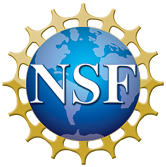Project 795: J. A. Gauthier, M. Kearney, J. A. Maisano, O. Rieppel, A. D. Behlke. 2012. Assembling the Squamate Tree of Life: Perspectives from the Phenotype and the Fossil Record. Bulletin of the Peabody Museum of Natural History. 53 (1):3-308.
Abstract
We assembled a dataset of 192 carefully selected species—51 extinct and 141 extant—and 976 apomorphies distributed among 610 phenotypic characters to investigate the phylogeny of Squamata (“lizards,” including snakes and amphisbaenians). These data enabled us to infer a tree much like those derived from previous morphological analyses, but with better support for some key clades. There are also several novel elements, some of which pose striking departures from traditional ideas about lizard evolution (e.g., that mosasaurs and polyglyphanodontians are on the scleroglossan stem, rather than parts of the crown, and related to varanoids and teiids, respectively). Longbodied, limb-reduced, “snake-like” fossorial lizards—most notably dibamids, amphisbaenians and snakes—have been and continue to be the chief source of character conflict in squamate morphological phylogenetics. Carnivorous lizards (especially snakes, mosasaurs and varanoids) have proven a close second. Genetic data, presumably less burdened by the potential for adaptive convergence related to fossoriality, were expected to resolve these conflicts. Although recent gene phylogenies seem to do so, they also differ radically from any phylogeny based on the phenotype, especially for the most ancient crown squamate divergences that occured during the latter half of the Mesozoic. Our study relied on traditionally prepared specimens as well as high-resolution computed tomography scans that afforded unprecendented access to the cranial anatomy of Squamata. This, along with the inclusion of stem fossils, provided an unparalleled sample of the phenotype enabling us to more fully explore the extreme incongruences between molecular and morphological topologies for the squamate tree of life. Despite this extensive new database, we were unable to find morphological support for the major rearrangement of the deep divergences in Squamata proposed by recent molecular studies. Instead, our data strongly support the same fundamental topology suggested by most previous morphological studies—an Iguania–Scleroglossa basal split, a sister-group relationship between Gekkota and Autarchoglossa, and the divergence between Anguimorpha and Scincomorpha—and documents the extreme degree of morphological homoplasy required by those molecular topologies.Read the article »
Article DOI: 10.3374/014.053.0101
Project DOI: 10.7934/P795, http://dx.doi.org/10.7934/P795
| This project contains |
|---|
Download Project SDD File |
Currently Viewing:
MorphoBank Project 795
MorphoBank Project 795
- Creation Date:
20 September 2012 - Publication Date:
15 April 2022
This research
supported by
Authors' Institutions ![]()
- University of Texas at Austin
- Yale University
- Field Museum of Natural History
- National Science Foundation
Members
| member name | taxa |
specimens |
media |
| MorphoBank Curator Project Administrator | 1 | 1 | 1 |
| Adam Behlke Full membership | 0 | 0 | 0 |
| Jacques Gauthier Full membership | 0 | 0 | 0 |
| Maureen Kearney Full membership | 0 | 0 | 0 |
| Rosemary Volpe Observer | 0 | 0 | 0 |
Project has no matrices defined.
Project downloads 
| type | number of downloads | Individual items downloaded (where applicable) |
| Total downloads from project | 5 | |
| Project downloads | 2 | |
| Document downloads | 3 | Gauthier et al. matrix (3 downloads); |

